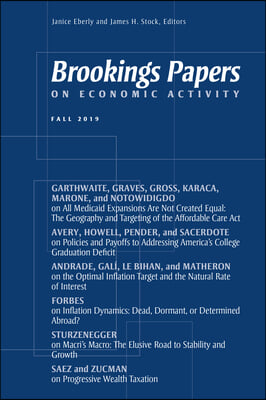大流行期间的经济影响、支付和家庭支出
IF 2.8
3区 经济学
Q1 ECONOMICS
引用次数: 5
摘要
摘要:家庭在抵达后的一两个月内仅花费了2020年经济影响支付(eip)的一小部分,这与流行病对支出、其他流行病计划和社会保险的限制相一致,并且与流行病早期阶段的经济损失相比,eip的支付范围更广。虽然这些知识产权保护计划没有满足大多数家庭的紧急经济需求,但第一轮知识产权保护计划确实为一些更容易遭受大流行经济损失的家庭提供了及时的大流行保险。大流行期间,流动财富较低的家庭和在家工作挣钱能力较弱的家庭在收到EIP后增加了消费。虽然我们对后期eip的测量不那么可靠,但我们的估计表明,第二轮和第三轮eip的平均支出甚至更少。我们的点估计表明,与2001年或2008年的经济刺激支出相比,平均短期支出更少。虽然我们的分析缺乏衡量长期支出影响的能力,但随着疫情对家庭的直接经济影响减弱,短期支出的缺乏促进了家庭资产负债表的强劲增长。本文章由计算机程序翻译,如有差异,请以英文原文为准。
Economic Impact Payments and Household Spending during the Pandemic
ABSTRACT:Households spent only a small fraction of their 2020 Economic Impact Payments (EIPs) within a month or two of arrival, consistent with pandemic constraints on spending, other pandemic programs and social insurance, and the broader disbursement of the EIPs compared to the economic losses during the early stages of the pandemic. While these EIPs did not fill an urgent economic need for most households, the first round of EIPs did provide timely pandemic insurance to some households that were more exposed to the economic losses from the pandemic. Households with lower liquid wealth entering the pandemic and those less able to earn while working from home raised consumption more following receipt of their EIP. While our measurement for later EIPs is not as reliable, our estimates suggest even less spending on average to the second and third rounds of EIPs. Our point estimates imply less short-term spending on average than in response to economic stimulus payments in 2001 or 2008. While our analysis lacks the power to measure longer-term spending effects, the lack of short-term spending contributed to strong household balance sheets as the direct economic effects of the pandemic on households waned.
求助全文
通过发布文献求助,成功后即可免费获取论文全文。
去求助
来源期刊

Brookings Papers on Economic Activity
ECONOMICS-
CiteScore
10.10
自引率
0.00%
发文量
12
期刊介绍:
The Brookings Papers on Economic Activity (BPEA) is a semi-annual academic conference and journal that pairs rigorous research with real-time policy analysis to address the most urgent economic challenges of the day. Working drafts of the papers are presented and discussed at conferences typically held twice each year, and the final versions of the papers and comments along with summaries of the general discussions are published in the journal several months later. The views expressed by the authors, discussants and conference participants in BPEA are strictly those of the authors, discussants and conference participants, and not of the Brookings Institution. As an independent think tank, the Brookings Institution does not take institutional positions on any issue.
 求助内容:
求助内容: 应助结果提醒方式:
应助结果提醒方式:


